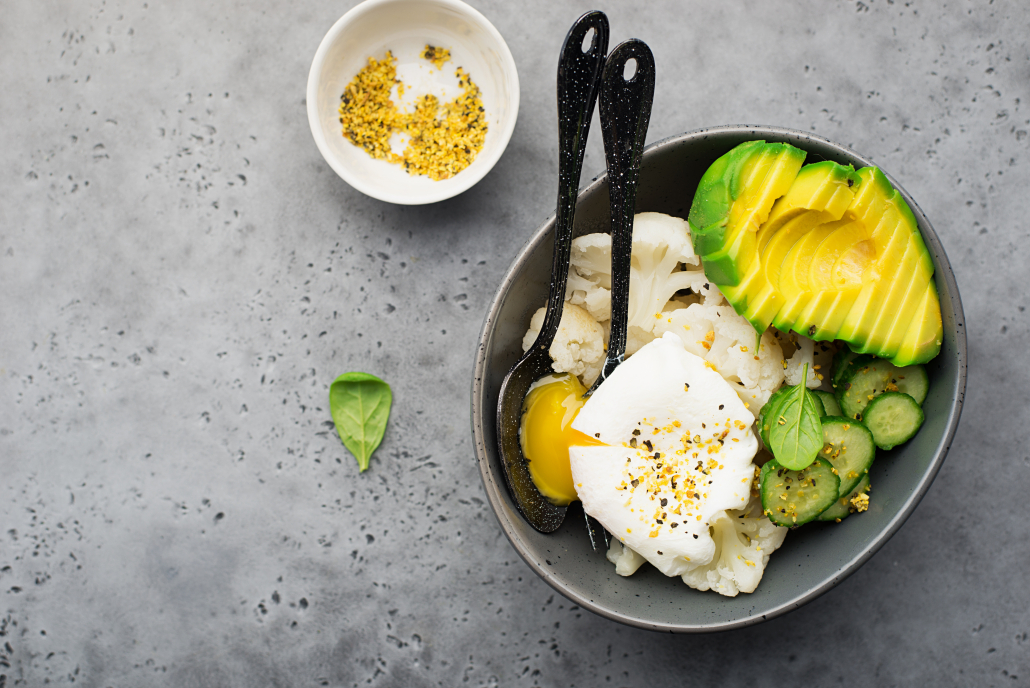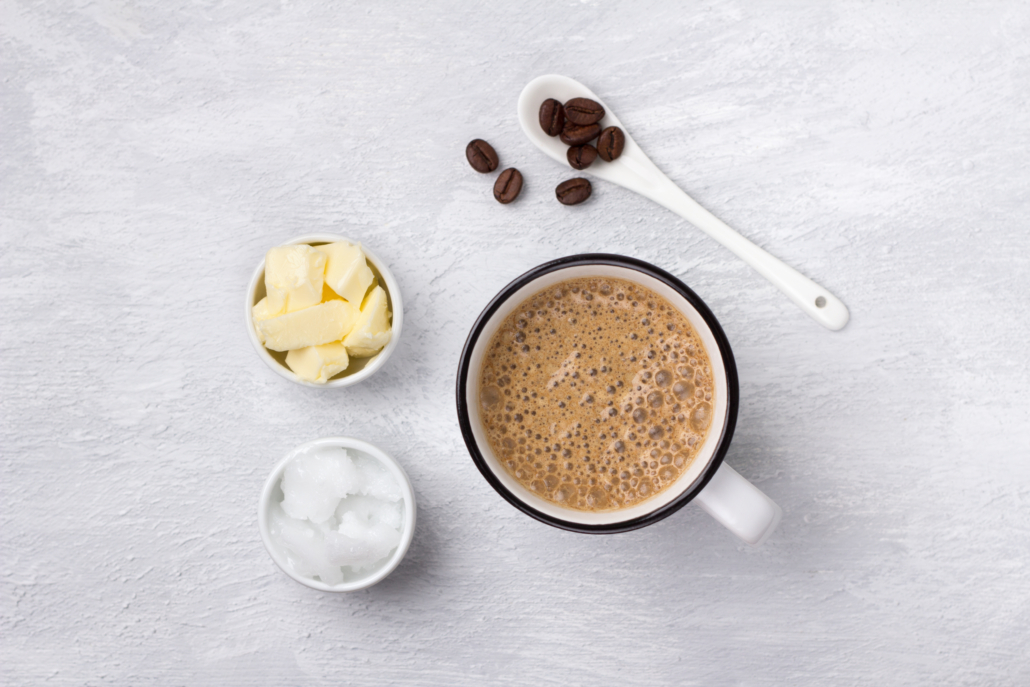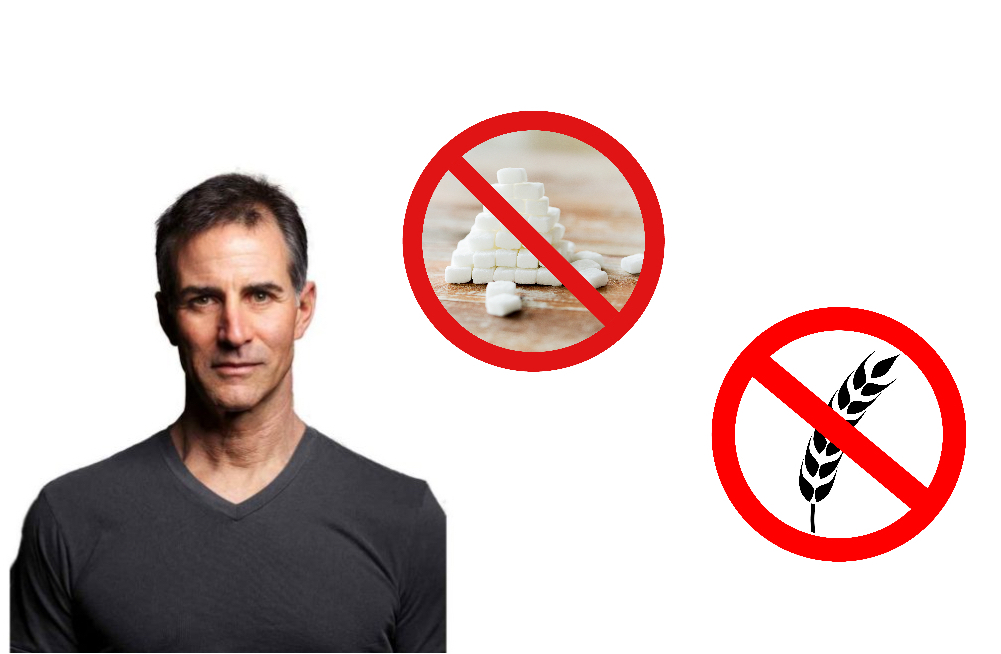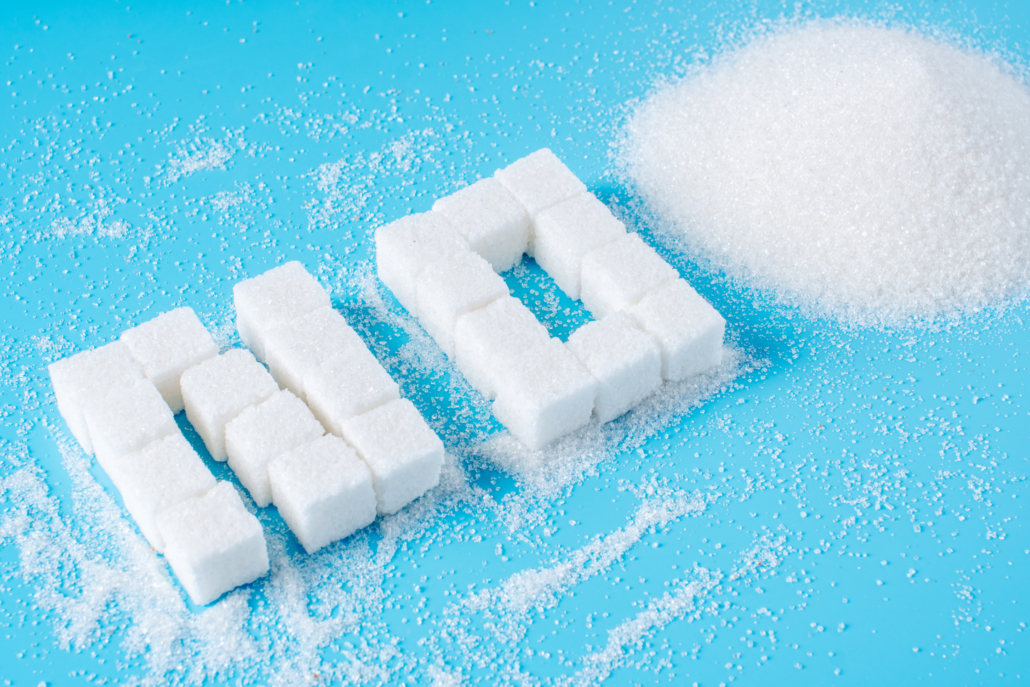We include products in articles we think are useful for our readers. If you buy products or services through links on our website, we may earn a small commission.
The Vegetarian Keto Diet: What to Eat, Benefits, and Risks

Table of Contents
- What is a Keto Diet?
- Can Vegetarians Eat Keto?
- Why Fat is the Perfect Fuel for Vegetarians?
- What is a Vegetarian Keto Diet?
- The Different Types of Vegetarians
- 5-Step Plan for Starting your Vegetarian Keto Diet
- Step 1: Calculate Your Macronutrient Needs
- Step 2: Reduce Carbs
- Step 3: Add Healthy Fats
- Step 4: Add High-Quality Proteins
- What about Vegetables?
- Avoiding Nutrient Deficiencies
- Keto for Vegetarians: The Outlook
If you’re a vegetarian interested in diet and health, you’ve probably heard the buzz around ketogenic diets and wondered if keto is compatible with a vegetarian lifestyle?
The answer is Yes! In this article we’ll show you how.
What is a Keto Diet?
A ketogenic (keto) diet means eating high-fat, moderate-proteins, and low to no carbohydrates. This macronutrient ratio switches the body from using carbohydrates for fuel, to turning fat into energy molecules called ketones. When ketone levels become elevated, you are in the metabolic state called ketosis, hence the name “keto diet”.
The macronutrient profile of a ketogenic diet looks like this:
- 70-80% of calories from fat
- 15-30% calories from protein
- 0-10% calories from carbohydrates
Reasons for Going Vegetarian
For vegetarians, keto can feel intimidating and inaccessible because many people who chose to be vegetarians often do so for two mains reasons:
- You’ve been led to believe that animal fats–and dietary fats in general–are harmful and should be avoided.
- You have ethical and environmental concerns around raising and eating animals.
Reasons for Going Keto
People that chose keto do so for reasons that commonly include:
- The proven metabolic and neurological benefits of a high-fat low-carb diet.
- An anthropological perspective that sees humans as primarily meat eaters, metabolically optimized for consuming quality animal fats, proteins, vitamins, and minerals.
Can Vegetarians Eat Keto?
On the surface, “ketotarians” and vegetarians might look like two entrenched armies. But where they often meet is in a shared desire to cut out toxic processed foods that saturate the Standard American Diet (SAD), and take control of their health through intentional eating.
If you’re a vegetarian and you can get on board with the benefits of fat, going keto while remaining vegetarian is possible, healthy, and sustainable.
Why Fat is the Perfect Fuel for Vegetarians?
Essential dietary fats are found throughout both the animal and plant kingdoms. Eating a high-fat low-carb diet makes fat your main energy source, which provides many benefits including:
- Improved insulin sensitivity.
- Improved blood lipid levels.
- More filling meals, reducing cravings for processed and high-carb foods.
- Regulation of inflammation and increased immunity.
- The ability to absorb fat-soluble vitamins (K, D, E, etc).
- Maintain healthy skin, hair, and nails.
What is a Vegetarian Keto Diet?
The vegetarian keto diet is an eating plan that combines aspects of vegetarianism with the keto emphasis on high-fat, moderate-protein, and low-carbs. Keto vegetarians follow roughly the same macro and micronutrient proportions as you would on a standard keto diet.
What type of Vegetarian are you?
To create the vegetarian keto diet that’s best for you, it’s important to determine what kind of vegetarian you are and build your plan accordingly.
The more liberal the type of vegetarian you are, the easier and healthier it will be to adopt a high-fat low-carb lifestyle.
This is because we humans need to eat a diet that provides essential fats, and all 9 essential amino acids, AKA complete proteins. When a nutrient is “essential,” this means that our bodies cannot produce it on our own, so we have to get it from the foods we eat.
While animal foods provide all the essential fats and amino acids in near perfect-proportions for humans, most plants lack one or more of them.
If you’re on a vegetarian diet that excludes all animal products, you have to get your essential fats and proteins from grains, legumes, and seeds/nuts. The high carbohydrate content of these foods makes them difficult to fit into a keto diet that restricts carbs to less than 35 grams per day.
The Different Types of Vegetarians
Not all vegetarians follow the same diet. Ordered by most strict, to the most liberal, here are 4 main types of vegetarians:
Vegans
- Eliminate all animal products including dairy, eggs, seafood, poultry, meat, and in many cases, honey.
Lacto vegetarians
- Eat dairy but avoid eggs, seafood, poultry, and meat. Most vegetarians in India fall into this category.
Lacto-Ovo vegetarians
- This is the most common type of vegetarianism in Western countries including the US, Europe. Lacto-ovo vegetarians enjoy dairy and eggs but avoid meat, seafood, and poultry.
Pescatarians
- Officially a semi-vegetarian way of eating that does not pose greater risks for nutrient deficiencies than standard omnivore diets. Pescatarians eat seafood, dairy, and eggs but avoid pork, poultry, and red meat.
5-Step Plan for Starting your Vegetarian Keto Diet
To give yourself the best chance of implementing, maintaining, and thriving on a vegetarian keto diet, it’s important to follow these five steps.
Step 1: Calculate Your Macronutrient Needs
Use this keto calculator to determine the amount of fats and proteins you need to optimally sustain your body and activity level. Once you know your macronutrient needs you’re ready to reduce and add foods accordingly.
Step 2: Reduce Carbs
To get into ketosis start by limiting your carb intake to a maximum of 20 grams per day. This means cutting out nearly all of the most popular vegetarian protein and carbohydrate sources including:
- Wheat
- Alternative wheat flours like spelt
- Quinoa
- Buckwheat
- Legumes, including beans, soy, peas, and lentils
- Milk
- Starchy vegetables like potatoes
- Fruits (except for small amounts of berries)
Step 3: Add Healthy Fats
Fats are the cornerstone of every keto diet, accounting for between 70% and 80% of your calories. So the type of fats you chose is critical to the success of your vegetarian keto plan, and your overall health.
The best fats for a vegetarian keto diet include:
Fatty fish (Pescatarians)
Salmon, tuna, anchovies, herring, mackerel, and sardines are rich in high-quality protein and essential omega-3 fats. Salmon, herring, and sardines also provide substantial amounts of vitamin D, a nutrient that can be hard to get naturally for most vegetarians. Vitamin D is critical for immune function, bone health, among other important functions.
Whole Eggs
Eggs are one of the most nutrient dense foods on earth. A single 56-gram egg is loaded with 5 grams of fat, 7 grams of protein, and 80 calories When eating eggs, especially on a vegetarian diet, its crucial to eat the whole egg. The yolk is rich in B vitamins and crucial antioxidants including lutein and zeaxanthin which are important for eye health.
Butter
Getting enough fat can be a challenge on any keto diet, and even harder for vegetarians. Butter is the perfect carb-free fat-boosting vegetarian keto staple.
Though victim to decades of misinformation and bogus links to poor heart health, high-quality current research shows only a small to neutral association between butter and heart disease.21 When part of a keto diet where your body burns fat for fuel, butter is likely very healthy.
Butter is also a rich source of the fatty acid butyrate, which research suggests may play a significant role in promoting brain health.
But not all butter is created equal. Research indicates that organic butter from grass-fed cows may have healthier fats than conventional butter.
Cheese
For vegetarians who can tolerate dairy, cheese can make another great high-fat, low-carb staple. One of the best things about cheese is that there are so many varieties to choose from. This can help keep a keto vegetarian diet more interesting after cutting out many of the familiar staples. Many kinds of cheese offer optimal ratios of fat and protein. And varieties of fermented cheeses like creme fraiche, cheddar, and gouda can provide probiotics.
Avocados
Avocados are loaded with healthy fats while offering a decent rundown of essential vitamins and minerals. One avocado can provide 30% of your daily potassium intake, which can be hard to get on a keto diet. Avocados have also been shown to balance blood sugar, support heart health along with healthy aging.
Coconut Oil
Popular in both vegetarian and non-vegetarian keto diets, coconut oil is a natural source of medium-chain triglycerides (MCTs). This type of fat is easily absorbed and turned into energy. That’s why people often use MCT’s to help with the transition into ketosis.
Olives and Cold Pressed Olive Oil
One of the most researched sources of healthy fats, olives and olive oil contain hard-to-get vitamin E, along with compounds that reduce inflammation and associated diseases including heart disease, osteoporosis and cancer.
A note when cooking with oils: Many vegetable oils including olive oil contain polyunsaturated fatty acids (PUFAS). For example, olive oil is 73% monounsaturated, 11% polyunsaturated and 14% saturated .These fats can be destabilized and “oxidized” when exposed to high heat.
Though fairly heat stable when compared to other vegetable oils, its still best to avoid heating olive oil. When overheated, PUFAS form toxic compounds, including lipid peroxides and aldehydes that can contribute to cancer.
Step 4: Add High-Quality Proteins
Though it’s true that animal foods contain all of the nine essential amino acids, non-meat animal sources including eggs and dairy can round out the protein needs for most vegetarians.
Because bodies and activity levels vary from person to person, we recommend aiming for 1.2 to 2.0 grams of protein per KG of body weight. This averages out to around 70 grams of protein per day accounting for roughly 25% of your total calorie intake.
Top 5 Vegetarian Proteins
- Fish (Pescatarians): An excellent source of protein for nearly every type of fish. For instance, a 3.5 oz portion of wild-caught sockeye salmon offers 27 grams of protein. A 3.75 oz can of sardines provides 14 grams of protein.
- Eggs: High quality and easily digestible. Two eggs provide 14 grams of protein and 1 gram of carbs.
- Greek yogurt: In addition to calcium and vitamin D (if fortified), Greek yogurt offers 15 to 20 grams of protein per 6 ounces.
- Cheese: Different cheeses offer different protein profiles. Generally, the less fat the cheese has, the higher protein. So it’s good to incorporate different cheeses into your keto vegetarian diet. Some high-protein cheeses include:
- Hard cheeses like cheddar, gouda, Swiss, and provolone: 7-8 grams of protein per ounce.
- Soft cheese like Brie, feta, Camembert: 4-6 grams of protein per ounce.
- Cottage cheese: 20 grams per 6 ounces.
- Hemp seeds: 9 grams of protein per one ounce. Hemp seeds are also a good source of magnesium, potassium, and omega-3 fatty acids.
- Almond Butter: Though we generally recommend against nuts and seeds due to high levels of plant toxins and anti-nutrients, they can provide supplemental proteins when needed, but should be used sparingly. Almond butter offers 7 grams of protein per ounce.
What about Vegetables?
We believe that one of the key factors that make keto diets so healthy is that they tend to cut out most plant-foods. The idea that plants aren’t ideal foods might seem surprising at first, but consider things from the plant’s perspective; like humans and other living creatures, plants are here to survive and reproduce.
To achieve these goals plants are loaded with plant toxins and antinutrients. They protect plants from pests (including us humans) and environmental threats like fungus and mold. These toxins include naturally-occurring pesticides, mineral chelators, and antibiotics. They can also prevent you from absorbing nutrients properly, leading to a net nutrient loss when absorption rates are considered.
Naturally Occurring Pesticides in Plant Foods
For vegetarians who want to avoid toxins in their foods by eating plants, this can come as a rude surprise. Researchers estimate that the average American eats about 1.5g of naturally occurring plant toxins per day. Many of these toxins are potent natural pesticides. We all know that synthetic pesticides sprayed on plants are a big deal, but the level of natural pesticides we consume is 10,000 times greater.
Many plant foods are also high in specific toxins called oxalates. They’re one of the mains reasons why your body does not absorb nearly all the iron and K1 that leafy greens like spinach are praised for. Grains and legumes are also high in antinutrients, including phytic acid, which can reduce the absorption of crucial minerals including iron to calcium.
Additionally, plant foods contain phytoestrogens which can increase infertility and developmental disorders. That’s why we don’t include soy in a recommended protein for vegetarians.
With that said, we know how tough it can be to cut plant foods for anybody, and especially vegetarians. So here’s a list of low-carb plants that we recommend consuming sparingly along with correct proportions of healthy fats and proteins.
Note that most vegetables also contain some protein that needs to be factored into your ratios.
5 Acceptable Low-Carb Vegetables
- Asparagus: 1.78 grams carbs per serving. A source of folate and vitamins A, C, and K.
- Zucchini: 2.11 grams carbs per serving. A source of vitamin B6, vitamin C, and potassium. Can also be used as a noodle substitute.
- Mushrooms: 2.26 grams carbs per serving. A source of zinc and selenium. Mushrooms grown under UV light can also provide vitamin D.
- Cauliflower: 2.97 grams per serving. A source of antioxidants and choline.
- Cabbage: 3 grams carbs per serving. A source of vitamin C, D, and K.
Seed and Vegetable oils
Seed and vegetable oils are modern processed foods. Even olive oil only came onto the scene 4,000 years ago. A mere blip on the timeline of our dietary evolution.
There are two kinds of vegetable oils that should be avoided or reduced. The most inflammatory fat is Trans Fatty Acids should be completely removed. Numerous studies link them to inflammation and heart disease. Almost all highly processed foods contain trans fats in the form of:
- Margarine
- Vegetable Shortening
- Ingredients that list Hydrogenated (fully or partially) Oils
The second kind of fats to avoid or reduce are called polyunsaturated fatty acids (PUFAs). They are easily oxidated and can increase inflammation and cardiovascular disease. PUFAs are everywhere–here’s a few of the most common sources to watch out for.
- Grapeseed oil: 70.6% PUFA
- Sunflower oil: 68% PUFA
- Flax oil: 66% PUFA
- Safflower oil: 65% PUFA
- Corn oil: 54.6% PUFA
- Walnut oil: 53.9% PUFA
- Cottonseed oil: 52.4% PUFA
- Vegetable oil (soybean oil): 51.4% PUFA
- Sesame oil: 42% PUFA
- Peanut oil: 33.4% PUFA
Though the data on the overall benefits and drawback of vegetable oils for healthy people is inconclusive, if one of your goals is to eat less processed foods and stay metabolically closer to human evolutionary eating patterns, we strongly recommend getting your fat from whole foods, including oily fish, eggs, butter, cheese, with olive oil as an exception.
Avoiding Nutrient Deficiencies
On a vegetarian keto diet that restricts legumes and grains (fortified), and without animal meats, it’s important to make sure you’re getting adequate amounts of omega-3 fats, vitamin D, iron, vitamin B12, calcium, zinc, magnesium, and potassium.
Though this keto for vegetarians guide is intended to help you meet all of your macro and micronutrient needs, in some cases supplementation may be necessary. Vitamin D is hard to get enough of on any diet, so we recommend supplementation.
As with any dietary changes, it’s crucial to pay attention to how you feel and adjust accordingly.
Keto for Vegetarians: The Outlook
Though going keto for vegetarians might at first feel like a non-starter, it’s not only possible, but healthy, and sustainable.
Making fat the primary source of fuel for your body has tremendous benefits, and the good news is that there are plenty of non-meat sources of healthy fats and proteins to meet your essential nutrient needs.















